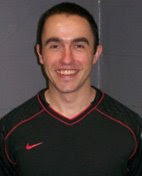‘The hardest thing for an athlete to do is not to train. You can’t sit still. You feel you should be out there working’ Graham Obree – World Champion Cyclist
Not having a recovery strategy is the biggest mistake you can make. We all have mobile phones, I-pods and laptops and they all run off batteries. If we don’t charge the batteries they won’t work. The human body is no different; we need to take time out to recharge the batteries. Work alone is not enough to produce the best results. Athletes need time to adapt to training. To encourage adaptation to training it is important to plan recovery activities that reduce residual fatigue. The sooner you recover from fatigue and the fresher you are when you complete a training session, the better the chance of improving. Increasing rate of recovery increases ability to train.
2. Concentrating on the percentage points.
Change allows the field to stay interesting for us but it’s easy to get caught up looking for the next big thing. Everyone focuses on getting the ‘edge’, looking for the one thing that will make the difference. They concentrate so hard on the 2% that they forget about the other 98%. Get the fundamentals of recovery sorted before you go for the fancy stuff. Walking round in compression garments all day is not going to help recovery of you have crappy nutrition; crappy training programmes and you don’t take time to rest (active and passive). Use the recovery pyramid (details can be found in Recovery and Regeneration: The Essential Guide to Training Without Falling Apart)
3. Doing the same thing over and over again and expecting to get a different result!
Prolonged use of any given means of restoration (recovery) will decrease the recuperative effect. Eastern block experts recommend that the same recovery strategy should not be applied more than once or twice a week in the same form (Mel Siff – Supertraining). You wouldn’t do the same type of training year round, so why do people invest in one recovery strategy. Fatigue is multi factorial and there are a number of different recovery strategies that you should use depending on the type of fatigue you are suffering from.
4. Not keeping a training diary.
One of the simplest things you can do to improve your recovery from training is to keep a training diary. A good training diary can act as an early warning system sending out red flags that highlight when you need to pull back from training. Training diaries don’t need to be complicated; you just need to keep one. Keep a track of the quality of your resting heart rate; sleep quantity and quality, energy levels, training quality, motivation, health and nutrition.
5. Thinking that it’s what you do immediately after training that is important.
You need to think about recovery and regeneration as a 24-hour thing. You will train for say 1-2 hours per session maybe 3-5 times a week. Most people will then only think about recovery immediately after the training session and will devote say 30 minutes to some form of recovery. That’s just 1.5-2.5 hour per week of focused recovery, which leaves 165.5-166.5 hours when you are not thinking about recovery. You do the maths! You need to become a 24-hour athlete and make sure you are taking care of all the recovery guidelines highlighted in Recovery and Regeneration: The Essential Guide to Training Without Falling Apart




No comments:
Post a Comment